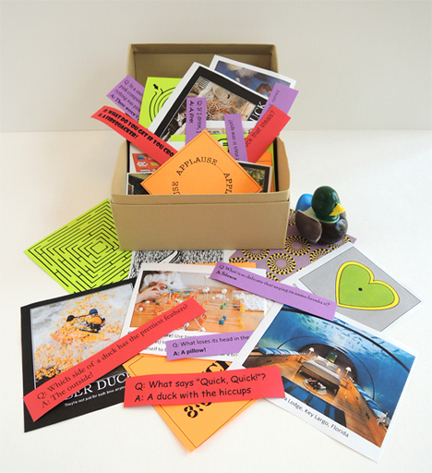 Inside this box are a number of tantalizing puzzles, mazes, optical illusions, images of unusual hotel rooms, building projects, and…ducks. Can all of these things be some how related? The answer is mostly definitely yes.
Inside this box are a number of tantalizing puzzles, mazes, optical illusions, images of unusual hotel rooms, building projects, and…ducks. Can all of these things be some how related? The answer is mostly definitely yes.
This project was part of To Be Continued, our story time program for children ages 6-8. Typically, we do the projects during the program. But unfortunately, the timing on this particular day only gave me five minutes to present the project. To further confound things, it was also the eve of a one month programming hiatus. So I needed something the kids could grab, take home, and discover for themselves. Not unlike the main character in the book!
We read Floors by Patrick Carman (Scholastic, 2011). Ten-year-old Leo Fillmore and his father are the maintenance crew at the Whippet Hotel. But the Whippet isn’t an ordinary hotel. It has a room that’s a giant pinball machine, a roller coaster elevator called the Double Helix, a roof-top duck pond, a Cake Room, a Robot Room, a Pond & Caves room, and a shark head named Daisy. The Whippet is the brainchild of Merganzer D. Whippet, inventor, engineer, architect, and eccentric. Unfortunately, Mr. Whippet has gone missing, the hotel is going haywire, and two mysterious men have been making nefarious inquiries. But things take a turn for the strange when Leo finds a mysterious purple box. Inside is a letter from a lawyer and a clue that can only be from Mr. Whippet. Now Leo, his friend Remi, a duck named Betty, and a talkative robot named Blop have just two days to solve the clues, find more puzzle boxes, explore some of the hotel’s strangest rooms, and save the Whippet.
You’ll need:
- 1 box
- Different color printer paper
- Puzzle box templates (located at the bottom of this post)
- A piece of curling ribbon
- Scissors for construction
- 1 rubber mini-duckie (optional)
Any old box will do, but I decided to splurge and purchase these super-sturdy papier-mâché treasure boxes from Discount School Supply (a set of 12 is $21). My idea was that once kids were done with the activities inside the box, they could decorate the outside with art supplies at home. Here’s what my boxes looked like:
 The tag says “Always bring a duck if you can. They are more useful than you know.” That’s a quote from the book. It’s a very valuable piece of advice given to Leo when he finds the first box. Here’s an image of the full contents of the box:
The tag says “Always bring a duck if you can. They are more useful than you know.” That’s a quote from the book. It’s a very valuable piece of advice given to Leo when he finds the first box. Here’s an image of the full contents of the box:
 In the book, Leo and his friend Remi have to follow cryptic clues, solve a number of riddles, and learn that things are not always as they seem. To replicate this experience for the story time kids, I grabbed mazes, optical illusions, and riddles from the internet.
In the book, Leo and his friend Remi have to follow cryptic clues, solve a number of riddles, and learn that things are not always as they seem. To replicate this experience for the story time kids, I grabbed mazes, optical illusions, and riddles from the internet.
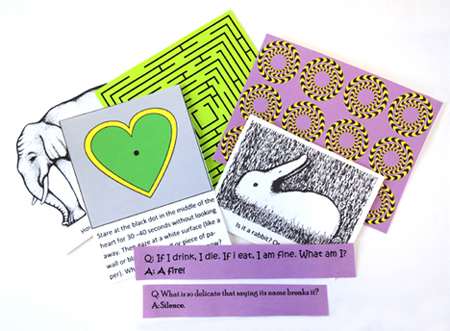 I also scanned some Thinklers (i.e. visual riddles) from the book Thinklers! by Kevin Brougher (Missing Piece Press, 2000).
I also scanned some Thinklers (i.e. visual riddles) from the book Thinklers! by Kevin Brougher (Missing Piece Press, 2000).
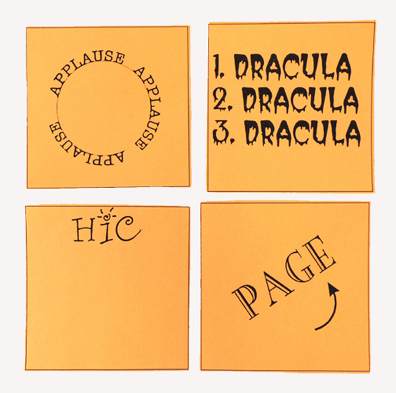 Since Merganzer engineered the Whippet himself, I included suggestions for a couple building projects involving things like gumdrops, marshmallows, toothpicks, toilet paper tubes, and card stock.
Since Merganzer engineered the Whippet himself, I included suggestions for a couple building projects involving things like gumdrops, marshmallows, toothpicks, toilet paper tubes, and card stock.
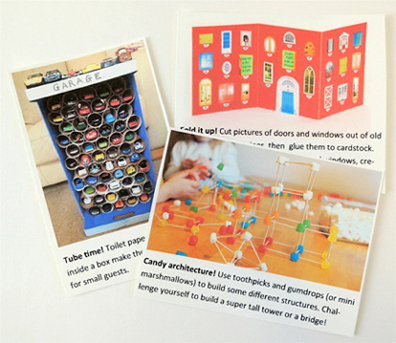 The rooms at the Whippet Hotel are fantastical and amazing. So I did a Google search for unusual real-life hotel rooms. And I found them. Oh yes I did. You must check out the ICEHOTEL in Sweden. Wow.
The rooms at the Whippet Hotel are fantastical and amazing. So I did a Google search for unusual real-life hotel rooms. And I found them. Oh yes I did. You must check out the ICEHOTEL in Sweden. Wow.
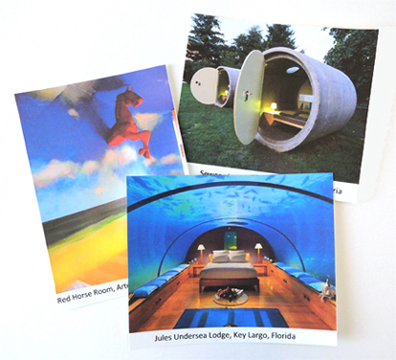 Mr. Whippet is obsessed with ducks, and Betty the duck saves the day more than once. So I rounded up some duck jokes, duck memes, and other miscellaneous duck items.
Mr. Whippet is obsessed with ducks, and Betty the duck saves the day more than once. So I rounded up some duck jokes, duck memes, and other miscellaneous duck items.
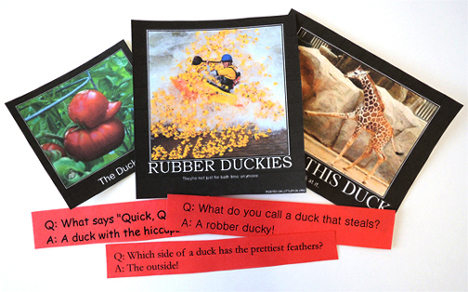 I topped everything off with a rubber mini-duck. I found these on Amazon (12 for $6.87).
I topped everything off with a rubber mini-duck. I found these on Amazon (12 for $6.87).
 Ready to put together a box? Here are the templates you’ll need to reproduce everything.
Ready to put together a box? Here are the templates you’ll need to reproduce everything.
The box tag template for the exterior of the box (you’ll need a hole punch too).
The box contents template 1 consists of 3 pages of duck memes, building activities, optical illusions, and images of unique hotel rooms. Since the images are in color, print them on white paper (card stock works great).
The box contents template 2 consists of 4 pages of Thinklers, mazes, riddles and duck jokes. I recommend printing each page on a different color paper. Also, to economize a little, I repeated the duck jokes and riddles twice on a single page.
Have fun! And may the duck be with you, always.
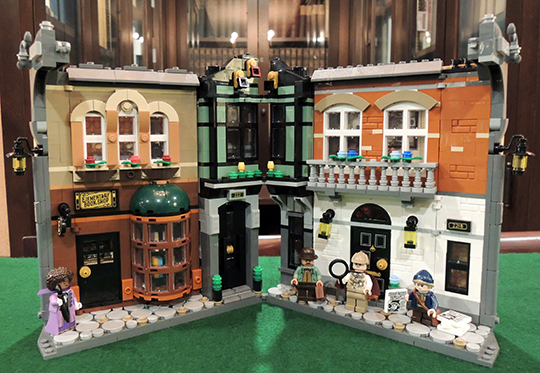
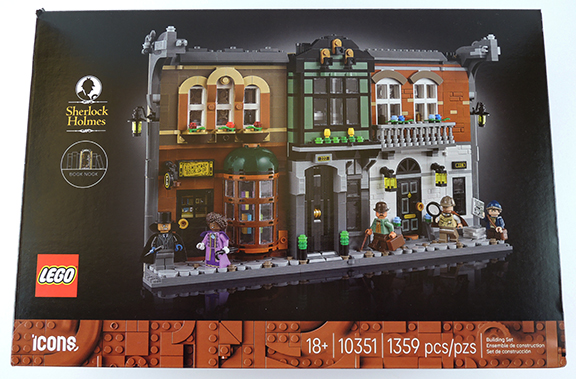
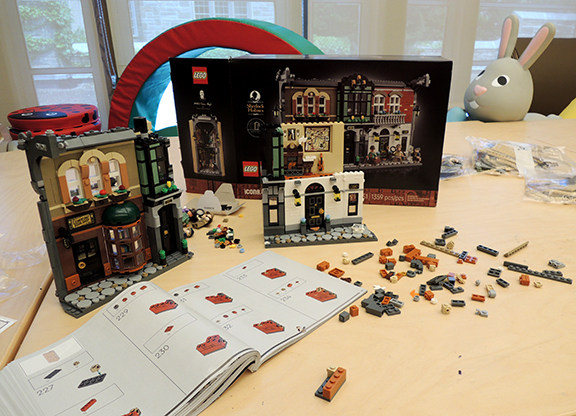 The instruction booklet has an absolutely wonderful preface that touches on the history of the Holmes books, Arthur Conan Doyle, and the various characters. There’s even a little mystery right off the bat as you tuck a significant object into Watson’s tiny briefcase! And speaking of Minifigures:
The instruction booklet has an absolutely wonderful preface that touches on the history of the Holmes books, Arthur Conan Doyle, and the various characters. There’s even a little mystery right off the bat as you tuck a significant object into Watson’s tiny briefcase! And speaking of Minifigures: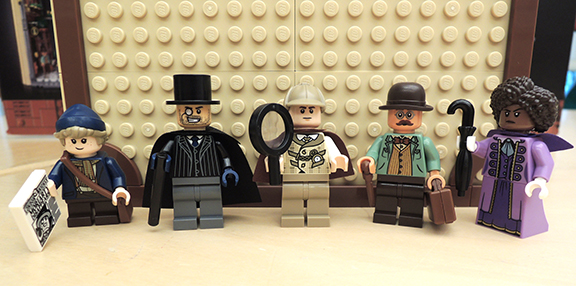 Look at Irene Adler! She’s wearing proper little white gloves! But I really started to nerd out when I got to the section that included Holmes’ study:
Look at Irene Adler! She’s wearing proper little white gloves! But I really started to nerd out when I got to the section that included Holmes’ study: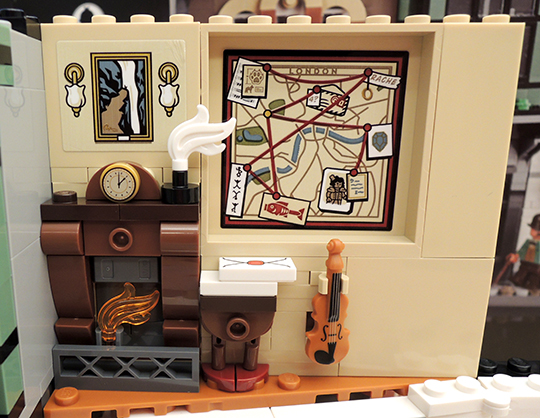 Recognize the painting over the mantle? It’s Sidney Paget’s illustration of Reichenbach Falls from The Final Problem! There’s also the Dancing Man code, and “RACHE” from A Study in Scarlet. The folks at LEGO really did their homework, and very thoughtfully scattered interesting facts and book connections into the build instructions.
Recognize the painting over the mantle? It’s Sidney Paget’s illustration of Reichenbach Falls from The Final Problem! There’s also the Dancing Man code, and “RACHE” from A Study in Scarlet. The folks at LEGO really did their homework, and very thoughtfully scattered interesting facts and book connections into the build instructions.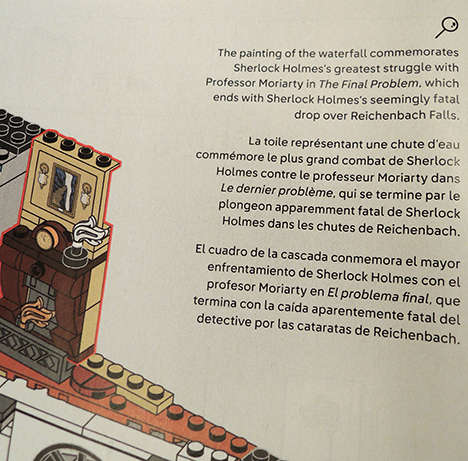
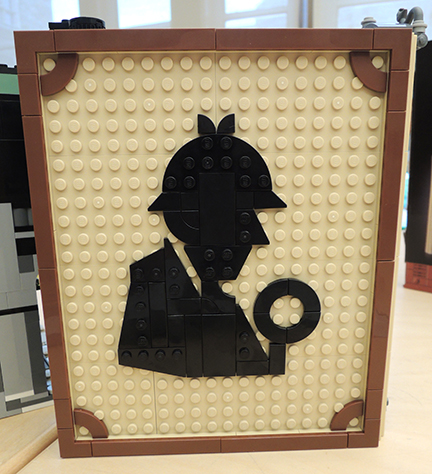

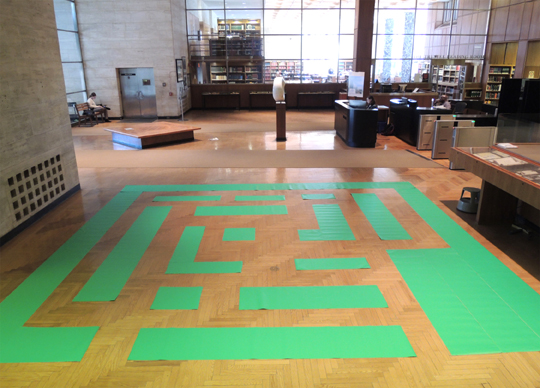 Today, we offer an exclusive first look at something big on our horizon. This month, my library is hosting a major math event. It’s called A Day at Digitopolis (named, of course, after the famed city in The Phantom Tollbooth). Today, you’re going to get a sneak peek at one of the activities – a giant 16′ x 16′ floor maze. But this is no ordinary maze! You have to get from start to finish without taking a single right-hand turn. Want to build one of your own? Read on!
Today, we offer an exclusive first look at something big on our horizon. This month, my library is hosting a major math event. It’s called A Day at Digitopolis (named, of course, after the famed city in The Phantom Tollbooth). Today, you’re going to get a sneak peek at one of the activities – a giant 16′ x 16′ floor maze. But this is no ordinary maze! You have to get from start to finish without taking a single right-hand turn. Want to build one of your own? Read on!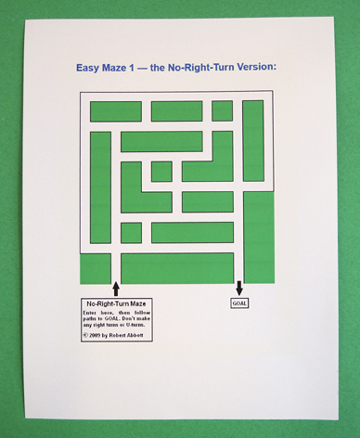
 Once I finalized the maze design and decided that it was going to be 16′ x 16′, I had to calculate how much contact paper we needed. The rolls I found on Amazon were a standard width of 18″, so I just had to determine the length. I work best with models, so I crafted a little maze, in which 1″ = 1 foot.
Once I finalized the maze design and decided that it was going to be 16′ x 16′, I had to calculate how much contact paper we needed. The rolls I found on Amazon were a standard width of 18″, so I just had to determine the length. I work best with models, so I crafted a little maze, in which 1″ = 1 foot.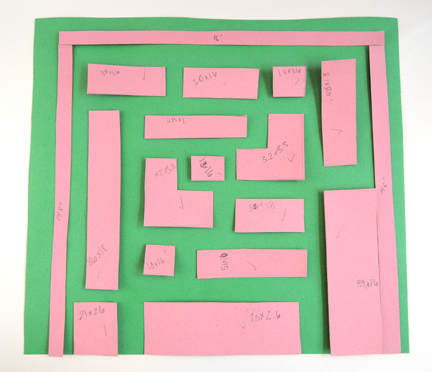 Once I added up the lengths of all the pink pieces, I had a rough estimate of how much contact paper we would need (112.25′). I ordered two, 75′ rolls, which left plenty of extra paper for mistakes. The task of actually building the maze fell on Marissa and Casandra Monroe. Casandra is a Princeton University student and super math whiz!
Once I added up the lengths of all the pink pieces, I had a rough estimate of how much contact paper we would need (112.25′). I ordered two, 75′ rolls, which left plenty of extra paper for mistakes. The task of actually building the maze fell on Marissa and Casandra Monroe. Casandra is a Princeton University student and super math whiz!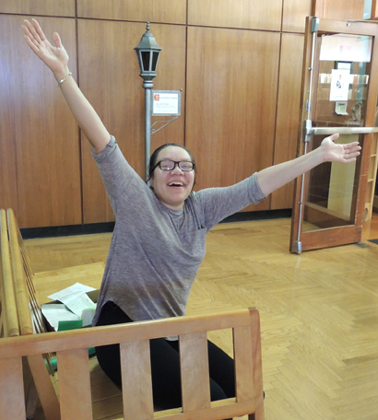 Casandra sketched the maze on graph paper, in which 1 square = 1 square foot. Then she drew a 16 x 16 square and sketched the various pieces inside it. To make the calculations nice and simple, she made path through the maze 1′ wide.
Casandra sketched the maze on graph paper, in which 1 square = 1 square foot. Then she drew a 16 x 16 square and sketched the various pieces inside it. To make the calculations nice and simple, she made path through the maze 1′ wide.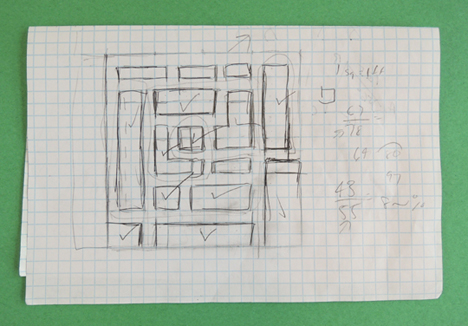 Then, Marissa and Casandra headed to the library’s cavernous main lobby and started building. They laid down the outer walls of the maze first:
Then, Marissa and Casandra headed to the library’s cavernous main lobby and started building. They laid down the outer walls of the maze first: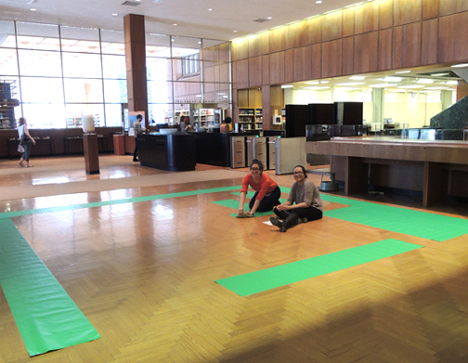 And then cut and placed the internal pieces of the maze.
And then cut and placed the internal pieces of the maze.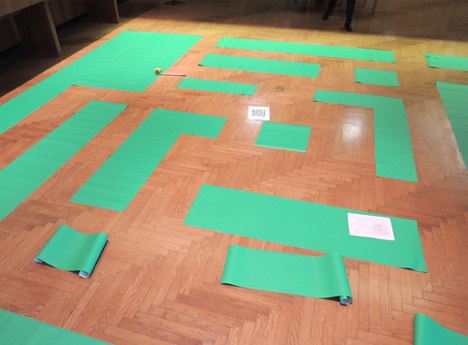 While they were filling in the pieces, they used a measuring tape to keep the path as close to 1′ as possible (even though there were some areas where the path was wider).
While they were filling in the pieces, they used a measuring tape to keep the path as close to 1′ as possible (even though there were some areas where the path was wider). Marissa and Casandra kept the backing on the contact paper. But to keep the pieces from curling up, they used masking tape loops to temporarily adhere it to the floor.
Marissa and Casandra kept the backing on the contact paper. But to keep the pieces from curling up, they used masking tape loops to temporarily adhere it to the floor.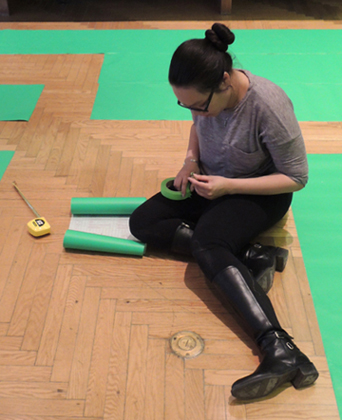 They also used permanent marker to label the backs of all the pieces and match them to a diagram of the maze.
They also used permanent marker to label the backs of all the pieces and match them to a diagram of the maze. The morning of the event, we’ll be able to glance at the diagram, check the backs of the pieces, and peel and stick the maze quickly (we’ll have a measuring tape on hand to remeasure the pathways too).
The morning of the event, we’ll be able to glance at the diagram, check the backs of the pieces, and peel and stick the maze quickly (we’ll have a measuring tape on hand to remeasure the pathways too).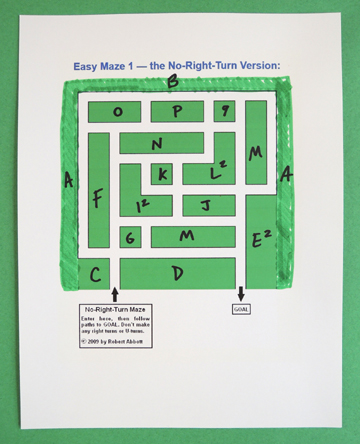 All in all, the maze took about 3 hours to put together. Cue “Eye of the Tiger!”
All in all, the maze took about 3 hours to put together. Cue “Eye of the Tiger!” Three important things: 1) Don’t forget to mark the start and finish of your maze (we’re using extra pieces of contact paper with “start” and “finish” written on them in permanent marker); 2) At the event, make sure to have the
Three important things: 1) Don’t forget to mark the start and finish of your maze (we’re using extra pieces of contact paper with “start” and “finish” written on them in permanent marker); 2) At the event, make sure to have the 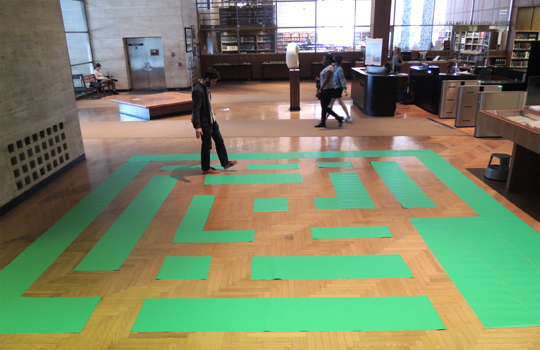 The real test, of course, will be at the
The real test, of course, will be at the 






